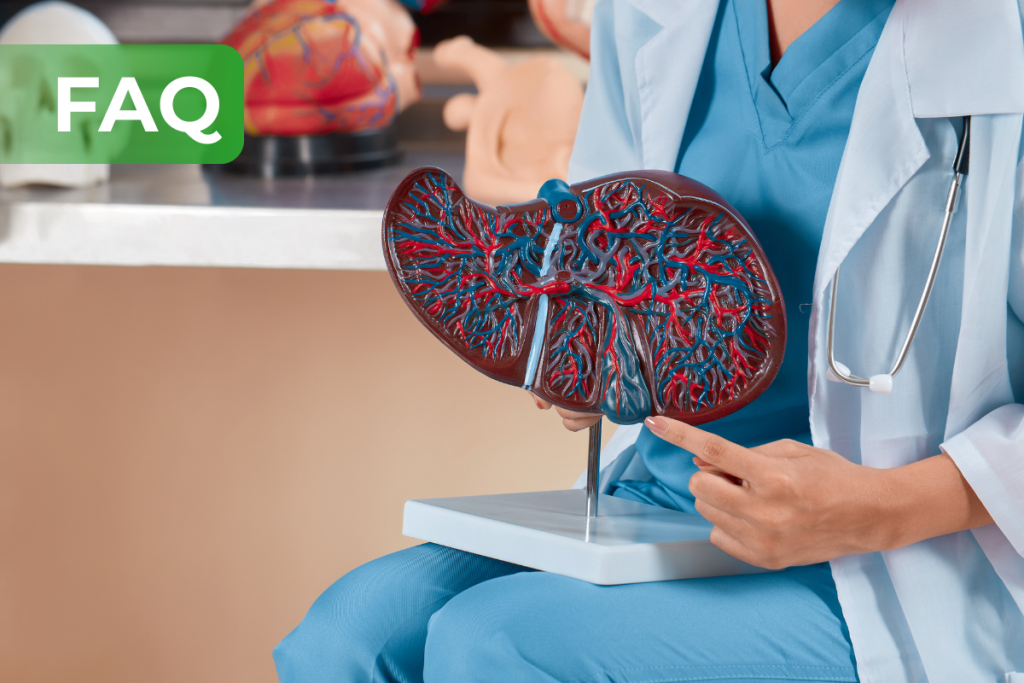
Liver Transplant FAQs
Reasons for a Liver Transplant
The liver is the largest internal organ and contributes to several critical bodily functions including processing nutrients and regulating immune responses. When the liver ceases to function properly, and in some cases of cancerous growth, transplanting healthy liver tissue from a donor can restore liver functionality. Transplants are usually reserved for cases of chronic (long-term) liver failure rather than acute (sudden) liver failure. The most common cause of chronic liver failure is a build-up of scar tissue in the liver that interferes with the normal function of the regular liver tissue, a condition known as cirrhosis. Cirrhosis can be caused by several underlying issues:1
- Hepatitis B and C
- Damage from excessive alcohol consuption
- Excessive fat build-up in the liver – called nonalcoholic fatty liver disease
- Genetic diseases affecting the liver
- Diseases affecting the bile ducts attached to the liver
How Many?
In 2024, there were 641 liver transplants performed in Pennsylvania, 5.6% of the 11,458 liver transplants performed nationally that same year. Nationally, liver transplants accounted for 23.8% of all single organ transplants performed in 2024, making it the second most common transplant procedure after Kidney transplants.2
Survivability Rates
Average Time on Waiting List
The average wait time for a liver transplant in the US is eleven months.5
Average Cost
Liver transplants are the third least expensive single organ transplant procedure, averaging just over 1 million dollars billed per procedure in the US in 2025.6
The cost of the individual procedure is not the whole picture, however. Prescription drug costs are also a major factor in overall financial burden. Transplant patients require lifelong immunosuppressant prescriptions in order to prevent their immune system from rejecting the donor organ. These medications can be costly depending on insurance coverage.
Travel costs are also a factor. There are only so many transplant centers in the United States, so prolonged travel is not uncommon for transplant patients receiving care, especially for rural patients, who already struggle with healthcare access. In Pennsylvania in 2024, 39% of transplant patients had to travel more than 150 nautical miles for their treatment. Nationally, that percentage increased to 46% for the same year.7
Risks
Aside from the usual risks of major surgeries, liver transplants incur several risk:8
- Organ Rejection – The body has an adverse reaction to the donor organ
- Primary Graft Failure – The donor heart fails to function
- Leakage or shrinking of the bile ducts
- Medication side effects – Immunosuppressants needed to prevent organ rejection can cause kidney damage and increase the risk of infection and other medical issues
How Can I Help?
The biggest barriers to transplantation are cost and supply. You can help address these issues by:
In the case of liver donation, there’s also the possibility of being a living donor. The liver is the only organ capable of regenerating lost tissue to the point of normal functionality. Because of this, living donors can have part of their liver transplanted without compromising their long-term health. The removed piece of liver can then be transplanted into another individual and restore normal liver function for them.
- Mayoclinic ↩︎
- Data from the Organ Procurement & Transplantation Network ↩︎
- Data from the Organ Procurement & Transplantation Network ↩︎
- Mayoclinic ↩︎
- Gift of Life ↩︎
- 2025 U.S. organ and tissue transplants: Estimated costs and utilization, emerging issues, and solutions ↩︎
- Data from the Organ Procurement & Transplantation Network ↩︎
- Mayoclinic ↩︎